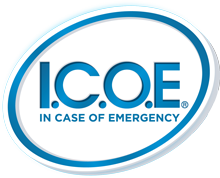
A Young Stroke Survivor Story: My Medical ID Bracelet Gives me Peace of Mind
Getting a Medical ID bracelet for safety is something I never thought about after my stroke. I’m still young, so at times I have an attitude of invincibility, which is untrue since I have actually already suffered a stroke. Recently I realized that I need to be a lot more responsible in case it happens again. I hardly notice it’s on my wrist, but it could potentially save my life. This is my story.
The Back Story:
At age 33, I suffered a stroke. At the time, I was unaware that a small hole in my heart, present from birth, known as a PFO (Patent Forman Ovale) would allow a clot to travel to my brain and result in a stroke. I’ve been active my entire life and I was a collegiate athlete, so I never imagined that I would have such an experience especially at such a young age. In the months leading up to the stroke, I took up some habits that may have attributed to the forming of the clot that traveled to my brain on that cold January morning. Anyone could be guilty of these habits and I’m sure almost 100% of the population has done one, if not both, of these offenses.
Bad Habit #1
The first was my bad sleeping habits. As a self-proclaimed workaholic, I would stay up all night working. Close to the time of my stroke, I even pulled several all-nighters, which I had never done in my life. I felt like a zombie, but for the sake of getting things done, I stayed up and deprived my body of the rest it needed. Sleep deprivation has been linked to the reduction in blood coagulation and cardiovascular disease.
https://www.ncbi.nlm.nih.gov/pmc/articles/PMC2913095/
Bad Habit #2
The second offense was my lack of movement and extensive sitting. Lack of movement can cause the blood to form clots. Blood flows through the body, but when you sit for extended periods, it can cause blood clots to form. A quick Google search will reveal thousands of sources referencing the negative effects of sitting in a confined space for too long. Although most articles refer to sitting on a plane while traveling, it can be applicable to sitting at a desk for too long, or in my case at the kitchen table too.
https://www.cdc.gov/ncbddd/dvt/travel.html
The combination of these two bad habits could have contributed to the formation of my clot and in turn my stroke.
The Attack:
The signs of my stroke were classic in nature, drooping on the left side of my face, loss of function on my left side and slurred speech. I was very lucky that I received immediate care, and that I was able to recover quickly. The use of a thrombolytic drug known as tPA (tissue plasminogen activator) saved my life and is the reason that I recovered so well. Most survivors who receive TPA do not need long-term care after leaving the hospital and recover to the same levels of ability as prior to their stroke.
Life After my Stroke:

Today I live my life with more purpose, than before my stroke. I have had to learn how to deal with some shortcomings when it comes to cognition, and following the stroke, I had to deal with numbing pain on my left side. More importantly, I became acquainted with stories of other stroke survivor’s. It was then that I realized, I needed to protect myself. In case I’m ever in another situation and don’t have people who can give an account of my medical history, I needed a way to communicate my condition.
That’s when I decided that a medical alert ID bracelet was the best and quickest way to do that. I’m not a big jewelry wearer, and with young children, it’s more of a pain to have anything that they can pull or grab that’s attached to my body. I’m also still fairly athletic and need something that’s safe for the gym, and not irritating while running. That’s when I decided to try I.C.O.E® Bracelets. I never gave it much thought before, but now that I have the bracelet, I feel safer. As a stroke survivor there are many things I didn’t think about before, but now I have to be more diligent and aware. I also have a responsibility to help others and be a voice for survivors like me, so I hope that they can find out more about medical ID bracelets.
Heart Awareness Month
During the month of February, we celebrate Heart Awareness Month. It is fitting that I take the time to write about my experience with heart conditions and stroke. I’ll start by sharing information from The American Heart and Stroke Association. The association strives to educate and raise funds for research that studies different heart-related diseases and conditions. They are one of the largest organizations for heart and stroke research, and these are some key facts found:
- Cardiovascular disease, listed as the underlying cause of death, accounts for nearly 801,000 deaths in the US. That’s about 1 of every 3 deaths in the US.
- About 2,200 Americans die of cardiovascular disease each day, an average of 1 death every 40 seconds.
- Cardiovascular diseases claim more lives each year than all forms of cancer and Chronic Lower Respiratory Disease combined.
- About 92.1 million American adults are living with some form of cardiovascular disease or the after-effects of stroke. Direct and indirect costs of cardiovascular diseases and stroke are estimated to total more than $316 billion; that includes both health expenditures and lost productivity.
- In 2013, cardiovascular deaths represented 31 percent of all global deaths.
About the Author
 Ify Whitfill is a wife and mother of three children. She owns a digital marketing agency, Red•i Marketing, LLC and enjoys writing on her business blog, www.myflamingolife.com.
Ify Whitfill is a wife and mother of three children. She owns a digital marketing agency, Red•i Marketing, LLC and enjoys writing on her business blog, www.myflamingolife.com.


